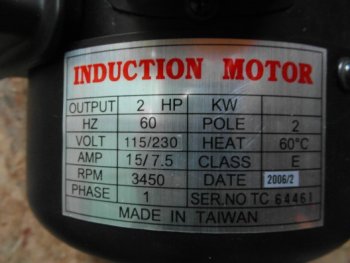Hi. I bought the plans for the NWGS and figured I would see if I could find a decently priced motor first. Unfortunately I wasn't able to find a 1.5HP 1750 RPM motor but did find a new 2.0 HP 2350 RPM (115/230) one. The NWGS plans do mention a 3450 RPM motor will work but doesn't go into much more details. I suspect it is simple a matter of finding a larger pulley for the drive wheel side or should I have other concerns about this motor? What do you think...am I in business or did I make a bad purchase?
Here are the specs:
2 HP
115/230
15 / 7.5 Amps
3450 RPM
Ph 1
Class E (just read that Class E motors are a higher efficiency version of class B)
Model # LR63420 Model D (It appears to be a motor for a fairly nice table saw)
Thanks!
Here are the specs:
2 HP
115/230
15 / 7.5 Amps
3450 RPM
Ph 1
Class E (just read that Class E motors are a higher efficiency version of class B)
Model # LR63420 Model D (It appears to be a motor for a fairly nice table saw)
Thanks!


